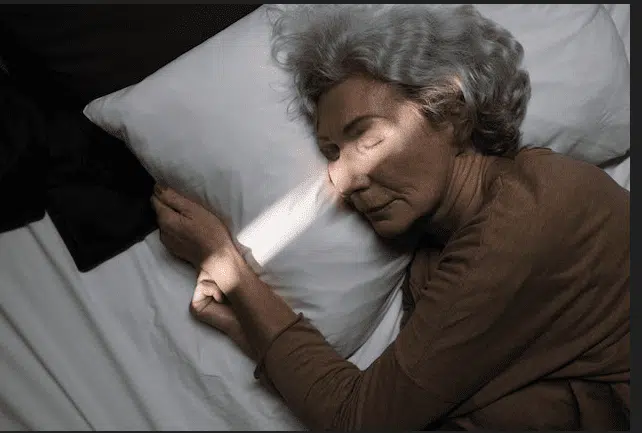Preventing Bedsores in a Home Care Setting
Posted in Senior Health Care Tips
Bed sores (also known as pressure ulcers) are ruptures to the skin and underlying tissue caused by prolonged pressure on the skin. If left untreated, a bed sore can result in permanent damage to the skin, potentially life-threatening infections, and other medical complications.
This type of injury is most common among those who spend extensive time in bed or in a wheelchair, however, other factors can contribute to the development of bed sores. 
Read on to learn about bed sore risk factors and prevention.
What causes a bed sore?
Bed sores are caused when there is too much pressure on the skin for an extended period of time. This pressure prevents blood from reaching parts of the skin, causing tissue damage that will form into a sore or ulcer.
Limited mobility is often a common factor among those who experience bed sores, as the individual cannot reposition themselves periodically to alleviate pressure.
Bed sores can also be caused by repeated friction of the skin against clothing or bedsheets, especially if the skin is moist due to perspiration or other bodily fluids.
Finally, bed sores can be caused by an individual sliding down a chair or bed. In these cases, as an individual’s bone structure slides down a surface, the skin is pulled in the opposite direction, resulting in damage to the skin.
Common bed sore sites:
While bed sores can occur on any point in the body, they are most common in places where the skin covers bony areas of the body with little tissue to provide cushioning.
For individuals in wheelchairs, sores tend to appear on the tailbone, buttocks, shoulder blades, spine, and the backs of arms or legs where they contact the chair.
Individuals who spend most of their time in bed, on the other hand, tend to experience bed sores on the back or sides of the head, shoulder blades, hip, lower back, tailbone, heels, ankles, and back of the knee.
Risk factors:
There are both mental and physical conditions that can lead to bed sores. They include:
- Immobility – prevents an individual from repositioning regularly
- Incontinence – skin that is moist due to urine or stool weakens and is more prone to damage
- Loss of sensory perception – prevents individual from feeling discomfort or pain from a developing sore
- Poor nutrition/dehydration – a lack of hydration or nutrients can lead to the breakdown of skin tissue
- Poor blood flow – blood delivers oxygen to the skin. Poor circulation due to medication or cardiovascular disease can prevent skin from receiving enough oxygen to survive.
Preventing Bed Sores
Preventing bed sores can be done on your own if you have the ability to move under your own power safely, however, those with limited or no mobility may benefit from the help of another person.
- Shift your weight frequently – try to reposition yourself at least once every hour, changing where your skin contacts the bed or chair.
- Keep your skin clean and dry – use a gentle soap, especially on areas where you may sweat regularly or come in contact with other bodily fluids. When washing your skin, be very gentle and pat your skin dry, rather than rubbing.
- Lift yourself if possible and safe – if you spend most of your time in a wheelchair, consider performing chair pushups by raising yourself out of the chair using your arms and hand rests. Only attempt this around others until you feel comfortable and safe, and be sure to lock the wheels of your chair.
- Consider bed sore prevention items – There are special models of wheelchairs that allow for tilting, which will change the points of pressure along your body and the chair. Additionally, consider purchasing pressure-reducing pillows, mattresses and cushions that are designed to lower the impact on small parts of your body.
- Avoid extreme bed positions – If your bed has adjustable elevations, avoid tilting the head of the bed more than 30 degrees, as this can contribute to sliding and shearing.
- Inspect your skin – using a mirror or help from another, regularly inspect your skin for discoloration, bruising, open wounds, redness, or other visual indicators of a developing bed sore.
How Home Care Helps
Since bed sores often impact those with restricted mobility, having a second person in the home can be a huge help in preventing bed sores.
With the assistance of a caregiver, an individual at risk for bed sores has someone available to remember to reposition regularly, can assist in safely repositioning, perform visual skin checks on hard-to-see areas of the body, and assist in regular skin care activities like washing and applying lotion.
In addition to these direct benefits, a home caregiver can assist an individual maintain good nutrition through assistance with shopping and meal prep, and can help coordinate medical care in the event of a bed sore or other medical issue that may contribute to their development.
SelectCare has helped New York families overcome challenges great and small since 1985. To learn more about how home health care can help you live a happier, healthier life in your long-term home, call SelectCare today or request a free in-home care guide.
